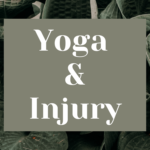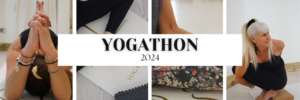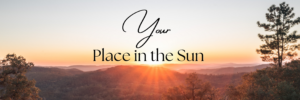Yoga is for everybody. TKV Desikachar said that, ‘anyone who can breathe, can do yoga’. But all classes will feel different for every body, and every mind.
At Yoga on the Edge we are always refining our timetable to make our classes as accessible as possible. With new members, new teachers, and new classes, it feels like time to get into detail about some of the classes we offer, and what you might expect to draw from these practices.
What a yoga class is. (And what it isn’t.)
The Yoga sutras of Patanjali sets out the tenets of yoga as 8 ‘limbs’. Which, all together, offer a kind of ‘blueprint’ for living a fulfilling life.
It’s important to recognise that when we see a yoga class advertised, we are – generally speaking – expecting that class to feature mostly Asana (postures) and/or Pranayama (breathing). These are limbs 3 and 4. Many traditional yoga classes will also touch on the Yamas and Niyamas – these are a list of personal and societal habits or behaviours that influence the way we move through the world, and our relationships with ourself and those around us. And there may also be themes and influence of the other limbs woven into the practice – meditation, philosophy, and self-study.
A yoga class – in the main – is not a deep exploration of ALL the limbs of yoga, as this is a deep, rich and life-long study which can’t be packaged up into an hour-long session. A good way of starting to explore the further limbs of yoga might be through workshops, retreats, talks and self-directed study/reading. This can absolutely enhance and complement your yoga classes. You might ask your teacher for suggested next steps.
How do you want to feel?
In yoga classes there is a huge variation in the levels of intensity of asana. So, from yin to slow flow all the way to rocket yoga, there’s a level of intensity that will suit you! Also take into account where you are in your yoga practice – how you feel that day, what your energy levels are like, and what you need. Sometimes you want to move your body, other times you want to be grounded in a restful nest of props and pillows.
Of course your experience of yoga and what it offers you, is totally unique to you… but here’s some starting points:
If you want CALM
Try Yin:
A slow, mostly floor-based practice. Yin holds poses for several minutes at a time, focusing on melting through fascia (connective tissue). It’s a practice of great depth, and for some of us, sitting in stillness can be the toughest part of all.
Or Slow Flow
Moving slowly, in longer sequences, asanas (postures) are linked together, getting a feeling of ‘flow’ to your movements. This practice draws influence from Yin and Restorative practices to deliver deep stretches, long holds and total relaxation.
If you want to SWEAT
Try Vinyasa
One of the more demanding, and diverse practices. Whilst it’s similar in intensity to Ashtanga, the sequences vary from class to class. Creative sequencing gives each class the theme or focus to help unlock body and mind and work towards a physical peak pose (asana).
Or Ashtanga
One of the more dynamic yoga practices, Ashtanga classes typically follow a set sequence or series. Primary series, being the first, followed by secondary, and so on. Ashtanga is structured around the Tristana method – Ujjayi Pranayama, Bandhas and Dristi.
Or Rocket
Rocket yoga combines elements of ashtanga and vinyasa. It’s a fast-paced and dynamic style… exactly as the name suggests!
If you want a NAP
Try Yoga Nidra
Two words… yogic sleep. That’s right… a yoga where you literally lie down (or sit, if you prefer). This practice doesn’t require any asana (postures), instead you lie supported whilst you are guided through a deeply relaxing, yet powerful meditation. You might see this incorporated into other classes such as Yin or Slow Flow.
If you want to RESET
Try Restorative Yoga
Restorative yoga allows you to reset the nervous system and bring you to a place of calm. It’s a gentle practice working in long-held, comfortable and comforting poses. Poses are passive, and with the use of props offer a deeply nourishing experience.
You want to go DEEP
Try Breathwork
This practice may or may not include any asana work at all. Depending on the instructor, the aim of a breathwork practice is to explore the physical and mental responses to deep breathing. By consciously changing the pattern of your breathing you can create differing responses in the body – for example, you might use breathwork to promote relaxation or deep sleep. Alternatively, you might use breathwork to balance the nervous system or invigorate mind and body.
Or Dharma Yoga
Dharma blends traditional styles of yoga with philosophy, pranayama (breathing) and meditation.
Dharma yoga sequences are designed to allow the free flow of pranic energy along the spine.
If you want to FLY
Try Aerial Yoga
– long lengths of fabric – called slings or trapeze – are suspended from the ceiling. This allows you to move through traditional yoga postures (asana) supported by, and sometimes entirely suspended by the slings! This combination of asana and aerial art is sure to leave you floating.
If you want BALANCE
Try Yin/Yang
A Yin/Yang practice incorporates two styles of yoga into one class. The Yin element is a practice of stillness and depth, holding poses for minutes at a time, focusing on melting through fascia (connective tissue). The Yang is created by adding in more energising postures, to stretch and strengthen, leaving you feeling both energised and in a relaxed state of mind.
Inspired to try a new type of yoga class? Check out our timetable here…






